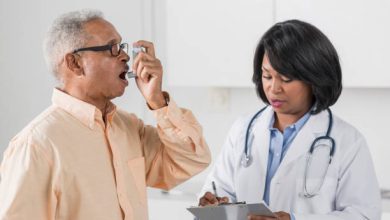The ONE Crohn’s Symptom Most Likely to Hit Black People the Hardest


You know what Crohn’s is like, at its best and its worst.
An ongoing inflammatory condition impacting your gastrointestinal tract, Crohn’s can trigger a full range of symptoms, everything from abdominal pain to diarrhea, bleeding, weight loss, vomiting, fatigue, and more!
Now, while the effects of the disease can vary a lot from person to person, there may be one symptom you need to look at for most. It’s called perianal fistulae.
In fact, recent research from Mount Sinai is teaching us a lot about perianal fistulae, revealing that it may affect both Black adults and children at twice the rate as other racial groups.
RELATED: 5 Signs of Sudden Onset Crohn’s Disease
What Is Perianal Fistulae?
Abnormal openings between the anal canal and the skin surrounding the anus, these fistulae can be especially bothersome. Not only do they often trigger pain (and at the very least, discomfort), but they also cause drainage of pus and fecal matter, which can cause infections and even abscess formation.
In case you aren’t familiar with an abscess, it’s a pocket of pus, kinda like a swollen, painful lump, and typically contains thick, yellowish fluid. Talk about nasty! The good news is, it’s your body’s way of fighting off infection, and as ugly and troubling as it may be, is an important part of your immune system’s strategy.
But back to perianal fistulae.
For individuals with Crohn’s, perianal fistulae may require a combination of surgical and medical interventions. While the exact reasons for the differences in risk factors between Black patients and other races are uncertain, experts believe it mostly comes down to genetics, environmental issues, and healthcare disparities.
RELATED: Crohn’s Disease: Causes, RELIEF, & Prevention
Treating Perianal Fistulae
Usually, the best treatment for perianal fistulae in Crohn’s disease involves surgical procedures and antibiotic therapy. These surgical procedures typically work by draining abscesses, ‘sealing’ the fistulae, and preventing them from reopening or recurring. Meanwhile, antibiotics are used to control any infection and stimulate healing. Although these two approaches are effective in many cases, they aren’t foolproof.
In some cases, antibiotics and surgery do not provide lasting relief and it’s certainly possible that perianal fistulae may recur repeatedly.
But there is hope.
For individuals living with Crohn’s disease and perianal fistulae, new advancements are showing great promise. These new medical therapeutics may just be game-changers. Anti-inflammatory drugs, biologic agents, and so-called immunomodulators can work by stimulating your entire body system. Others target specific components of your immune system, especially those involved in inflammation and healing.
And then there’s stem cell therapy.
Researchers at Mt. Sinai and other hospitals are finding that stem cell therapy may hold the key to renewed help for sufferers of Crohn’s perianal fistulae.
RELATED: Stem Cells: What You Need to Know
How Does Stem Cell Therapy Work?
These emerging therapies hold great promise for the treatment of perianal fistulae, and work in a number of marvelous ways. Basically, they involve the transplantation of stem cells to help with tissue repair and regeneration. Early studies are revealing encouraging results, and many individuals have even experienced significant improvements in their fistulae, everything from complete and lasting closure to relief of pain and uncomfortable symptoms.
But wait, what are stem cells?
In simple terms, stem cells are like little superheroes. They are found throughout tissues and organs and are capable of becoming virtually any type of cell the body has – muscle, skin, brain, you name it. In other words, they are highly versatile and useful.
They’re basically your body’s building blocks and can help repair or replace all kinds of damaged stuff in your body.
Although further research is still required before we can be certain about the safety and efficacy of these cells, they certainly appear to be a very promising potential treatment for folks with Crohn’s disease and perianal fistulae!
If you or a loved one is living with this issue, make sure to consult your healthcare professional about all your options. If you want, you may even be a candidate for clinical trials or experimental therapies. It all depends on your symptoms, your life, and what you want to do.
As always, your doctor can help determine the most appropriate treatment approach for your needs and preferences. So be sure to at least ask about advancements like new biologics, anti-inflammatory drugs, and even stem cell therapies.
Tired of suffering from perianal fistulae due to Crohn’s and looking for a treatment that can possibly heal it once and for all? Just want better symptom relief? While surgical procedures combined with antibiotics may be the usual course of treatment, they don’t have to be yours.
By getting informed about your options and working closely with your doctors, you can seize back your life, and put Crohn’s disease back in its place!




